I’ve lived a fair bit of my life in the city of Pune and it’s a very special place to me. I first moved here in 2012 to study medicine at the Armed Forces Medical College (AFMC), an institution to which I owe a lot. Between adjusting to new life and its rules, studying anatomy and finishing an obligatory 10-kilometre run at the historic Race Course right opposite our college, I was also extremely interested in the history of the college I was studying at. I learnt that AFMC was founded not in 1962 (as undergraduates often believed), but in 1948 – with its first campus at Eve’s Estate (God knows where that was or who Eve was – some suggested it was named after the wife of an industrialist land-owner) before it shifted to its current location – the 150-year old Connaught Barracks of Wanowrie.


We’d spend our Sundays outside, often trying to escape the summer heat by going to a park for the shade. One such park was the Bund Garden, on the southern bank of the Mula-Mutha river, named after the fact that it was built adjacent to a ‘bund’ (बंद in Hindi and Marathi) – a local word for a dam or an embankment. The Bund was built in the 1850s by the famous Parsi industrialist Jamsetjee Jejeebhoy (of Mumbai’s JJ Hospital and JJ School fame). On reading up about the bund in Pune online, I discovered that there was also an area known as “The Bund” in Shanghai. It was an expensive waterfront area, lined by fancy hotels and multinational bank headquarters. I wondered if the two of them were connected in any way, or if the word “Bund” meant the same thing in Shanghai as it did in Pune. As it turned out, the answer was yes.
As I read up about the Bund in Shanghai, I found interesting connections between Pune and Shanghai, which I reexplored recently after having a conversation with a colleague who studied medicine in China and spent a considerable amount of time walking by the Bund in Shanghai.
But before we get into those connections, here’s a little background.
Baghdad to Bombay
In the 1830s, a Jewish trader named David Sassoon arrived in Bombay from Baghdad and started selling Persian carpets. Soon, he expanded his business, becoming a middleman between British textile firms and commodity merchants from the Persian Gulf. He eventually became one of the richest industrialists of Bombay and, by the end of the 1850s, it was said of him that, “silver and gold, silks, gums and spices, opium and cotton, wool and wheat– whatever moves over sea or land feels the hand or bears the mark of Sassoon and Company.”
In 1833, the British administration decided to end the monopoly of the British East India Company in the opium trade with China. Soon, every industrialist wanted a piece of the action. Opium was banned in China, and foreign trade heavily regulated. In addition, the British could only trade with the Chinese at a single port (Guangzhou). For this reason, opium obtained from poppy flowers grown in India was smuggled into China, in exchange for tea – a commodity of great value in Britain and increasingly in India.
In 1839, a standoff between Britain and China turned nasty, and it led to a full-blown war – known as the First Opium War. The war came to an end in 1842, at which point the Chinese government surrendered and signed the Treaty of Nanking – agreeing to pay the British 21 million pounds in war reparations, ceding them the island of Hong Kong , and opening up more ports for the British to trade at – one of which was Shanghai. Land was given in the city of Shanghai to western powers – Britain, France and the United States, for them to build enclaves.
After the Treaty of Nanking, David Sassoon expanded his trade in China, and soon the Bombay-based David Sassoon & Co. opened up branches all over Asia and beyond – from Manchester to Yokohama. David was joined in business by his sons Abdallah (later ‘Albert’) and Elias.
David, the patriarch and arguably the most famous member of the Sassoon family (and perhaps the subject of a future blog post), passed away in 1864, and his business passed into his sons’ hands with Abdallah ‘Albert’ Sassoon as its chairman. Sibling rivalry got in the way of things and Elias Sassoon started a rival company called “E. D. Sassoon & Co.” which started trading in foods, opium and cotton, eventually opening an office in Shanghai. In 1907, the British and Chinese governments came to an agreement to stop supplying opium to China – which led E. D. Sassoon & Co. to completely stop its opium trade over a decade and instead focus on the cotton mill business in Bombay.
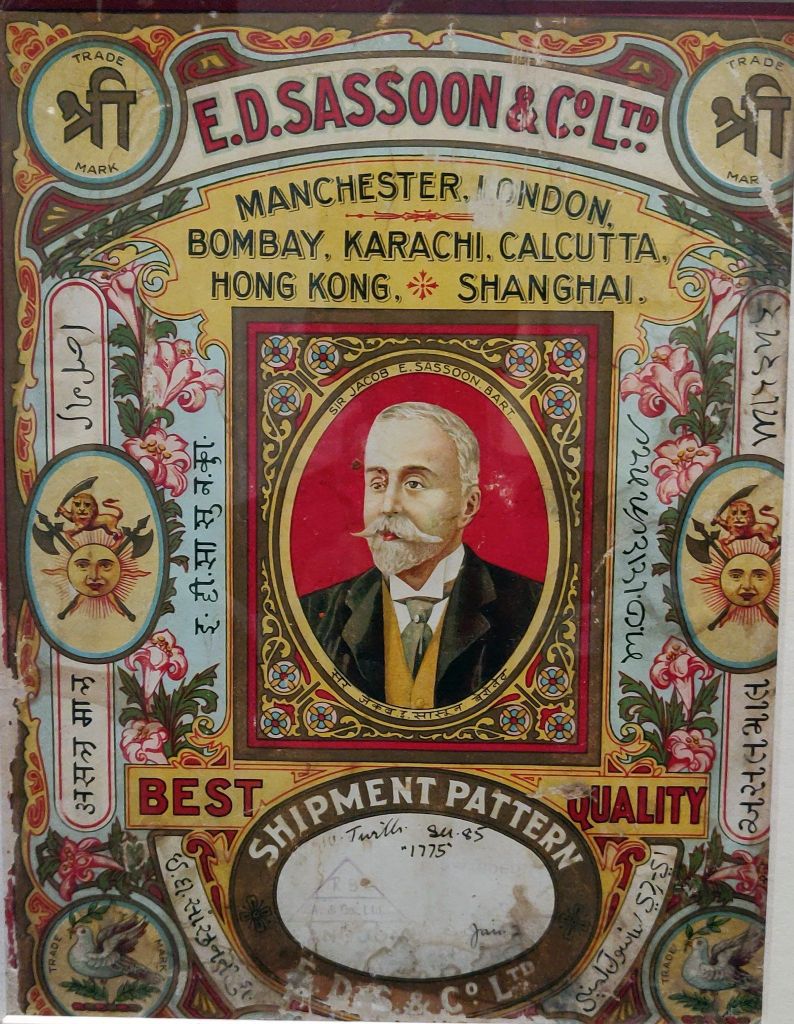
Photograph: Debbasish Das, from a DAG exhibition at the Red Fort in 2019.
After Elias’s death, the family business was taken over by his sons – first Jacob and then Edward. After Edward’s death in 1924, the control of E. D. Sassoon & Co. went to his son Victor.
Victor Sassoon
Ellice Victor Elias Sassoon, or ‘Victor Sassoon’, as he was better known, was born in 1881 in Naples, Italy – where his parents had stopped enroute to India from Britain. He was raised in England and educated at Harrow and Cambridge, while his father worked in the family business back home in Bombay. After completing his education, he was sent to Bombay and Shanghai to help out with the family business, and young Victor soon acquired the image of a playboy – pursuing women, horses and wealth. In 1914, when the First World War broke out, he volunteered and served in the Royal Flying Corps, but his aviation career was cut short in 1916 by a crippling injury to his leg that plagued him for the rest of his life, forcing him to walk with the help of a cane.

Picture: thatsmags.com
He returned to Bombay after the war, eventually becoming a textile baron and an influential figure in Bombay’s and Poona’s horse-racing circles, being one of the chief patrons of the Poona Club. After his father’s death in 1924, he took over the family business and also the baronetcy of Bombay, becoming Sir Victor Sassoon.
In the 1920s, E. D. Sassoon & Co. were the largest textile mill owners in Bombay. But India of the 1920s was a politically uncertain place and in the midst of an ever-growing independence movement, and Victor thought he should move his business elsewhere, and so, he decided to shift his business – lock, stock and barrel – to Shanghai.
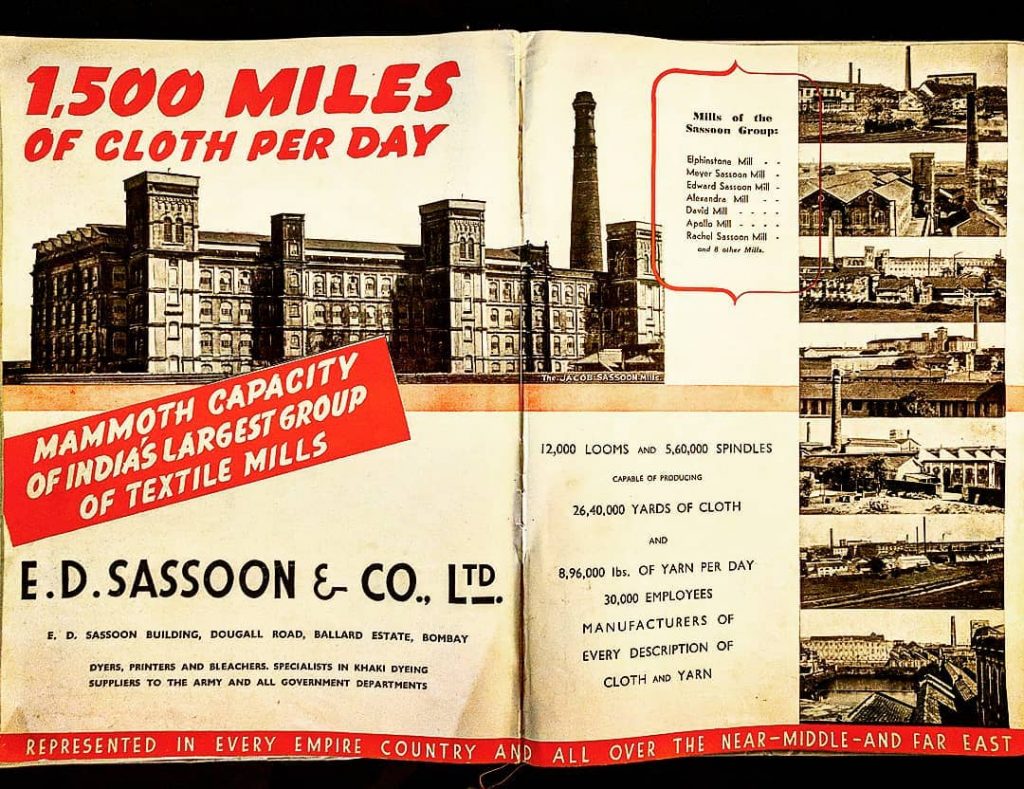
Photograph: Dr Shekhar Krishanan, from his post “Inside Indu Mills: A Textile Museum for Mumbai”.
Shanghai
Since 1845, the British had an enclave or ‘concession’ in Shanghai, which merged in 1863 with the American concession to form what was called the Shanghai International Settlement, located north of a tributary of the Huangpu river.
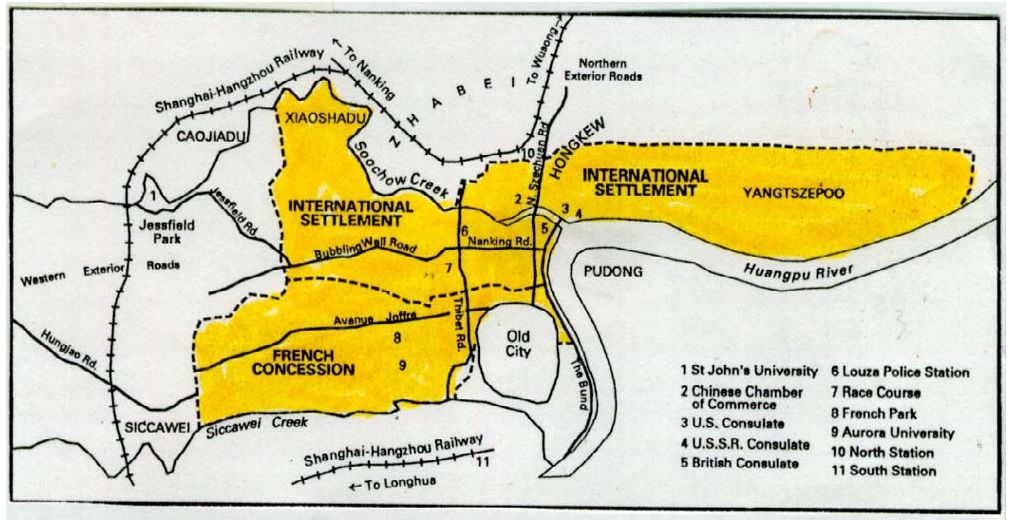
Eventually, as the western influence in the city grew, the area south of the tributary on the western bank of the Huangpu river started seeing development in the 1920s, and one of the most influential men involved in this was Victor Sassoon.
In the 1920s, Victor started investing the profits from the textile mills in Bombay into real estate in Shanghai. An embankment (or ‘bund’ – a term coming from the Indian community there) had been previously built along the marshy western riverbank, and Victor built several prominent buildings along the bank of the river in various architectural styles – neoclassical, Gothic, Baroque, and art deco to name a few. By the early 1930s, this area, known as ‘The Bund’, was home to headquarters of several banks, fancy hotels and social clubs where elite socialites would flock from afar and dance the night away with fancy cocktails in their hands. Soon, Shanghai came to be known as Paris of the Orient.
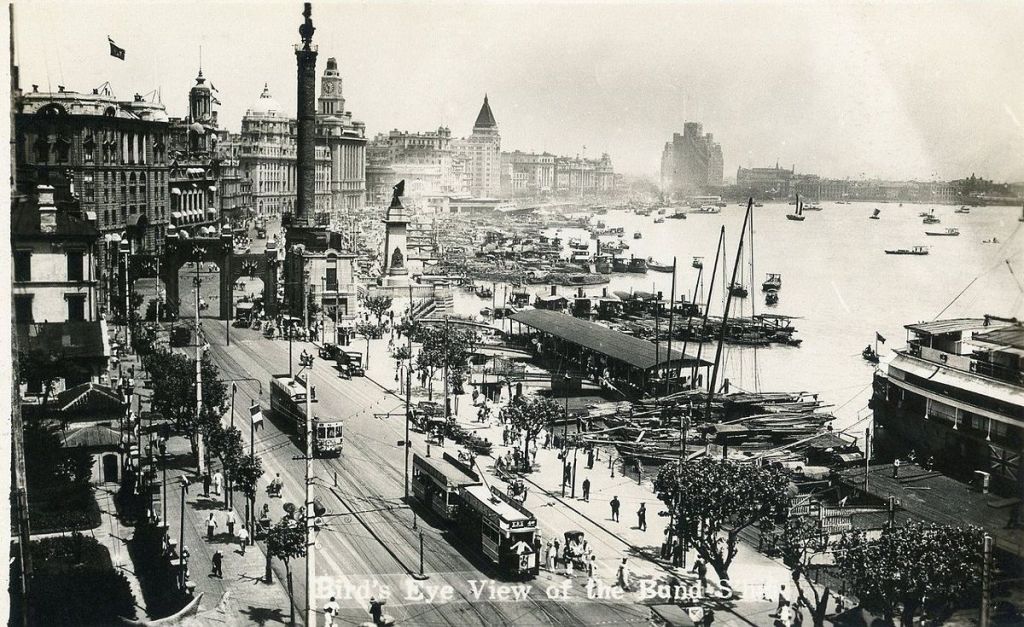
One such prominent building was the Sassoon House, an art deco building facing the Bund and one of the first skyscrapers anywhere in the eastern hemisphere. It housed offices for E. D. Sassoon and Co., as well as the Cathay Hotel – a luxury hotel that was widely known as ‘the number one mansion in the far east’. The Cathay Hotel hosted several distinguished guests from across the world – including Charlie Chaplin and Marlene Dietrich. The top floor of the building housed a penthouse which served as the private residence of Victor Sassoon.
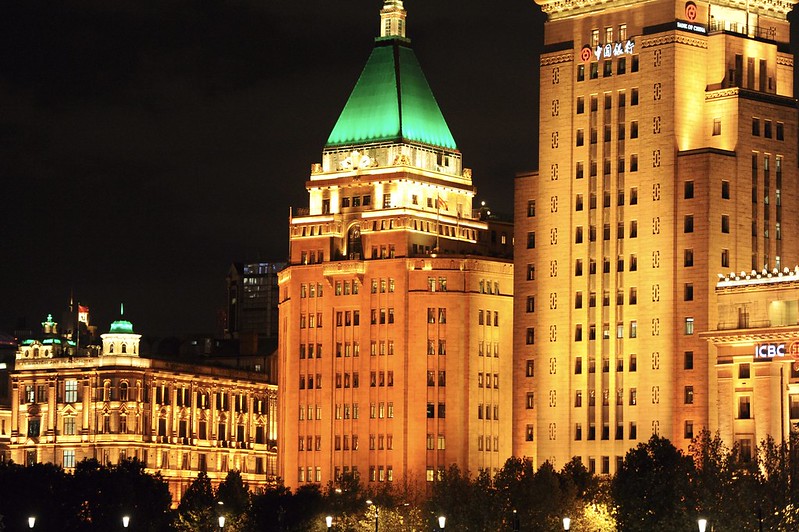
Photograph by Maxwell Fung.
Victor, who was obviously a wealthy man, also maintained another residence in the city – at Hongqiao Road, an arterial road that today connects central Shanghai to the airport towards the west. Today, ten miles west of the Bund lies the Shanghai Zoo, which once used to be a golf course that Victor would frequently visit. So he purchased a house next to the golf course. Named ‘Eves‘, the house was built in a typically English mock-Tudor style.

Picture from the archives of Southern Methodist University, Dallas, USA.

Photograph by Daniel Case.
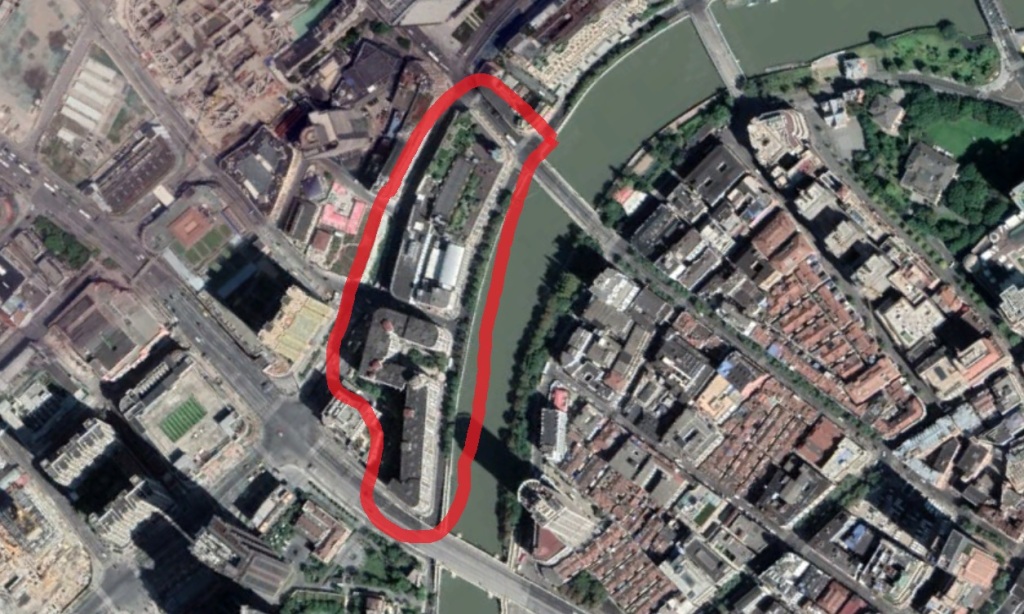
Poona
Victor would make frequent trips to India, spending most of his time here in Bombay and Poona. He was a horse-racing enthusiast, with significant contributions to the activity in India.
The Poona Club (formerly the Poona Gymkhana) was a sporting and recreational club established in the 1860s for the rich, the royals and high-placed British officialdom. It is believed that even Mark Twain visited the club when he was in the city, travelling through India, in 1896. In the 1930s, the club enjoyed significant patronage from Victor, who once allegedly remarked, “There is only one race greater than the Jews. And that’s the derby.”
Most of the early horseracing in India generally involved imported horses — from England, Australia and the Middle East. Some amount of breeding was happening in India, but most of it was for the needs of the army and not for commercial interests. In fact, the indigenous bred variety was called “the country-bred,” and this was a derogatory term used for a horse born in India. The “country-bred” eventually transformed into the “Indian Thoroughbred”, largely due to the contributions of Victor Sassoon, who started a scheme in conjunction with the Royal Western India Turf Club, to give an impetus to indigenous breeding of thoroughbreds.
He also started a 2000-metre annual race called Eve Champion Trophy, that runs to this day – with recent winners including horses named Bushtops (2019) and Selfie Star (2018).
Victor was fond of staying at large country estates away from the city centre. Just like in Shanghai, his property in Poona was on the outskirts of the city, on Solapur Road near the village of Hadapsar, about a mile east of the race course. As I read up in detail about his life, I discovered that this particular property was called “Eves Estate”, and at that moment, I said to myself, “Wait a minute, hold on! Isn’t that where the original campus of AFMC was?” A little bit of digging about its location confirmed that that is exactly what it was!
I felt a rush of blood unlike any other. This is the exactly the sort of stuff that gets me excited! I’m a colonial history enthusiast, and every single time I discover colonial-era connections between cities in India and abroad, I get really fascinated. And this was much more than just that. It was personal. It was about my own alma mater.
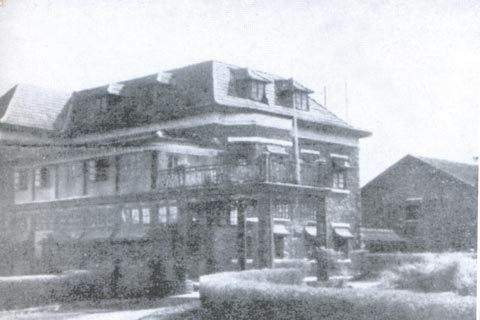
Photograph: AFMC.
Reading a bit more, I confirmed that , as was intuitive, Eve’s Estate and Eves Estate were the same thing. The house was indeed called “Eves” and Victor Sassoon was also known to his friends and family as “Eve” (this is where Eve Champions Trophy comes from). So, Eves Estate and Eve’s Estate were interchangeable terms.
But it really made think: why this name in particular? Why were his residences – both in Shanghai and in Poona – called “Eves“? What does it really mean? Where does “Eves” really come from?
I found the answer in a book on Jewish heritage in western Maharashtra, which was confirmed by an online exhibit on the website of the library of the Southern Methodist University in Dallas – which possesses a commendable collection of artefacts from Victor’s life. The answer is quite simple and elegant when you really think about it. You remember Victor’s full name, don’t you?
Ellice Victor Elias Sassoon. And “Eve”, as Victor was also known, was a further contraction of that.
Today, Eves Estate in Pune houses the Army Institute of Physical Training, which trains instructors to organise and deliver physical training and sports coaching across the Indian Army. Before that, it was briefly the location of the Armed Forces Medical College (from 1948 to 1951). It absolutely blows my mind when I think of the fact that the original campus of the college I went to, barely a mile east of the present campus where I spent five years of my life, was once the private residence of the man who is said to have changed the face of Shanghai. How bizarre is that?!
This post is inspired by a friend who loves exploring unlikely commonalities among apparently very dissimilar cities.
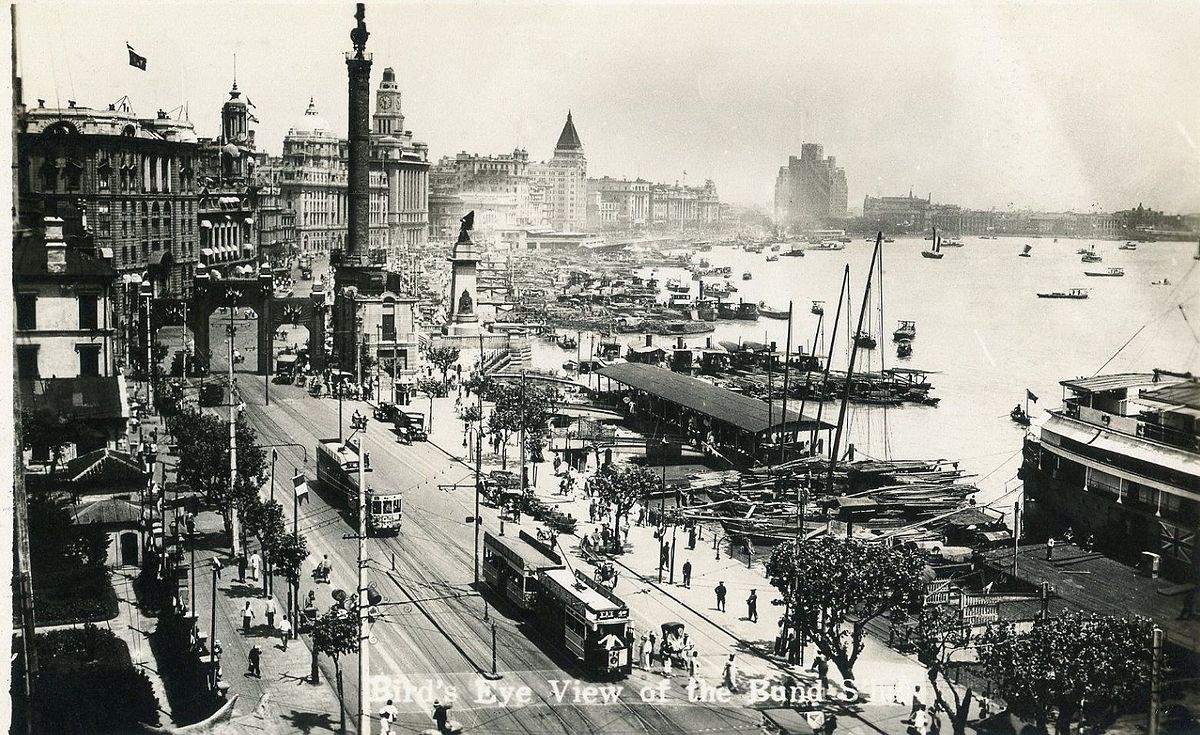
99 replies on “Pune, Shanghai, and a Man Named Victor”
Incredible!!
LikeLiked by 1 person
Awesome write up anmol.
God bless
LikeLiked by 1 person
A very well researched article indeed !
Being a diehard AFMCite and a Puneite I was totally unaware of this connection.
Any more similar / related articles ?
LikeLiked by 1 person
What an amazing trip down a historical lane!
To know that AFMC was started in 1948 in EVES and was later shifted to the current location is a great find!
Ever the best to the writer!
LikeLike
Excellent read! Felt like a thriller!
LikeLiked by 1 person
Excellent digging. Excellent writing. Well played.
LikeLiked by 1 person
Brilliantly researched and very well written. Bravo!
LikeLiked by 1 person
So intriguing.
Reminded me of amitav Ghosh’s sea of poppies…
Incredible ..the kind of research you have done..
Loved reading it..
LikeLiked by 1 person
Such an interesting read!
LikeLiked by 1 person
Fascinating read. Great connections. Well done!
LikeLiked by 1 person
This was forwarded to me by my cousin, because he felt I could be interested! And I was surely interested, as I spent my entire career of 34 years as faculty in AFMC. Well written with some interesting unknown facts!
LikeLiked by 1 person
Fascinating facts expressed so eloquently! Also, thorough research has gone into it, as if you have done PHD in the subject! Well done Anmol, so proud of you!
LikeLiked by 1 person
Awesome
LikeLiked by 1 person
Enjoyed reading it Anmol.its like you’re unraveling a mystery
LikeLiked by 1 person
Excellent read, Thanks for sharing historic images of Shanghai and Pune with the maps.
LikeLiked by 1 person
Fascinating read !!
LikeLiked by 1 person
Eloquently written
LikeLiked by 1 person
Very well researched and enlightening article. The AFMC connect was highly intriguing and beautifully brought out .
LikeLiked by 1 person
Your dad and mom are gushing over you.
Excellent article, now I am too
LikeLiked by 1 person
Amazing lookback to the origin of our alma mater. Very well written.
LikeLiked by 1 person
Very nicely narrated..Seems you have done a good research on this.. keep writing.. God Bless 🤗
LikeLiked by 1 person
Dr Anmol… wonderful write up about our college. Continue the good work. Proud of you.
LikeLike
Absolutely brilliant piece of writing about my own Alma Mater and its unknown history of connection with the Bund in Shanghai.
LikeLiked by 1 person
Brilliant !!
LikeLiked by 1 person
Incredible n Awesome .Anmol
LikeLiked by 1 person
What a nice read !! Had no idea of the ASPT connection though as a student we were allowed to use the pool there ( k batch) . Did you discover when and which Sassoon built the hospital in Pune? Look forward to reading more !!
LikeLiked by 1 person
I’ve always known that Eve’s estate was the location of ASPT near Ram Tekdi, but had no idea about the history and origin of the name. Brilliantly researched and narrated.
LikeLike
Great research work. Thank you for enlightening us about the college history.
LikeLike
Brilliantly written! And such vivid descriptions and images to match! Exiting to go through each bit of information! Very very well articulated Anmol! You have been an all rounder, brilliant and superbly bright. God to know this side too. God belss
LikeLike
This blog could have been a sub-plot in any of Amitav Ghoshs’ Ibis Trilogy, be it Sea of Poppies or River of Smoke or even Flood of Fire.
Trust a new-gen AFMC-ite, as young as 2012 fresher to blog this.
AFMC will continue to churn out guys like you and me and the rest of us.
Long live…….
LikeLike
Hi Kodi.
Thanks for sharing.
This blog could have been a sub-plot in any of Amitav Ghoshs’ Ibis Trilogy, be it Sea of Poppies or River of Smoke or even Flood of Fire.
Trust a new-gen AFMC-ite, as young as 2012 fresher to blog this.
AFMC will continue to churn out guys like you and me and the rest of us.
Long live…….
LikeLike
This comment somehow came verbatim from our L Batch WhatsApp group. How ??
I have no idea
LikeLike
Well researched and written. You can write longer pieces and your area of interest is a personal passion too. Looking forward to many more.
LikeLike
Thanks Anmol. Your investigative style of writing has made us so much more informed. Waiting to read more from from your end.
LikeLike
Awesome read bro. I’ve spent 6 years in china and went to “bund” plenty of times. But never knew about its connecting history back to india. Thanks to you we talked about this that day.
LikeLike
Awesome thriller
LikeLike
Wonderful read Anmol! Awesome research….keep it up!
LikeLiked by 1 person
Dear Anmol,
SSucha well researched and poised article. You brought a sense of intrigue as I went through . The connection with Shanghai and Eves wow….
Looking forward to your future posts
LikeLiked by 1 person
Brilliant piece. As always! Keep ’em coming!
LikeLiked by 1 person
Brilliant. Fascinating to know the
history of our alma mater.
LikeLiked by 1 person
Superlative beyond words…Painstakingly researched…Narrated as a thriller… Absolutely unputdownable…Yearning for more.
Bravo..!
Sanjiv Grover (U)
LikeLiked by 1 person
Wonderful blog. There’s so much more to learn about our Alma Mater. You inquisitive youngsters do us proud.
Well researched and written.
Waiting for more from your pen.
LikeLiked by 1 person
Fantastic account ! Just the other day I was in Bombay and was shown Sasoon’s house in Kala Goda. All of us, AFMCITES, have this perennial love for Poona and this piece brings in so much of joy. I am from G batch
LikeLiked by 1 person
Loved this…superbly written. I knew of the ASPT connection…never guessed about the EVES origin. Had thought it had something to do with his wife Evelyn….but you are right. Wiki confirms he had an EVE stud in England way before he met Evelyn.
LikeLike
Great research done with a keen interest in the history of our college.keep it up
LikeLike
Very interesting and well-written. I am interested because my parents were married in Pune in 1933 (father was born in Delhi in 1905) and when I visited my friend Ratta who lives in Pune we tried to find the venue but failed.
LikeLike
Brings back fond memories of Poona in the early 70’s and my years spent at AFMC. Informative and brilliantly written
LikeLike
Amazing!!!!
LikeLike
Thnx Anmol for writing Well researched article on History of AFMC. Did not lift my Eyes even for a second while reading the Article.
Good Job done. Keep it up.
LikeLiked by 1 person
What a fascinating article. For a Punekar interested to know more about its history, it was a gold mine.
Thank you Dr Anmol.
LikeLiked by 1 person
Very Well researched and written!! Loved the way you presented the gradual discovery of the facts, talking is along your journey! Look forward to discovering more!
This was esp interesting as I’ve lived in Shanghai and also in Pune (at AFMC!)
LikeLiked by 1 person
Wonderful & superlative blog Anmol! God bless!
LikeLike
Hey Anmol, This is totally mindblowingly fascinating read! Thriller. You’re in the wrong profession, in short
LikeLiked by 1 person
Well done. Well researched and well written.
LikeLiked by 1 person